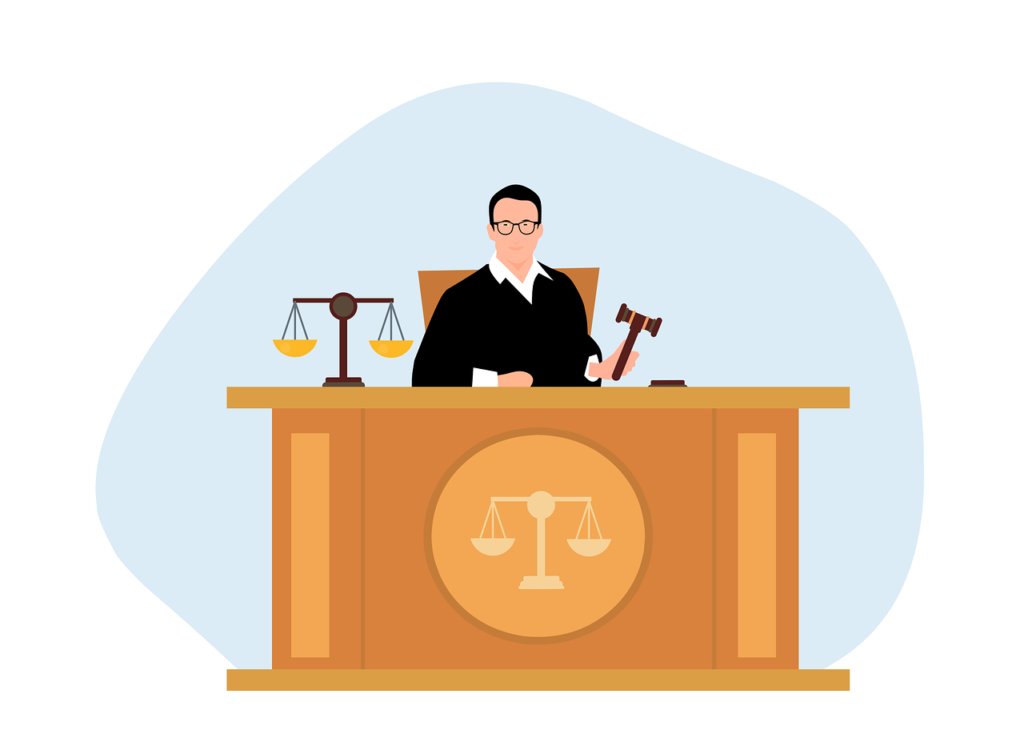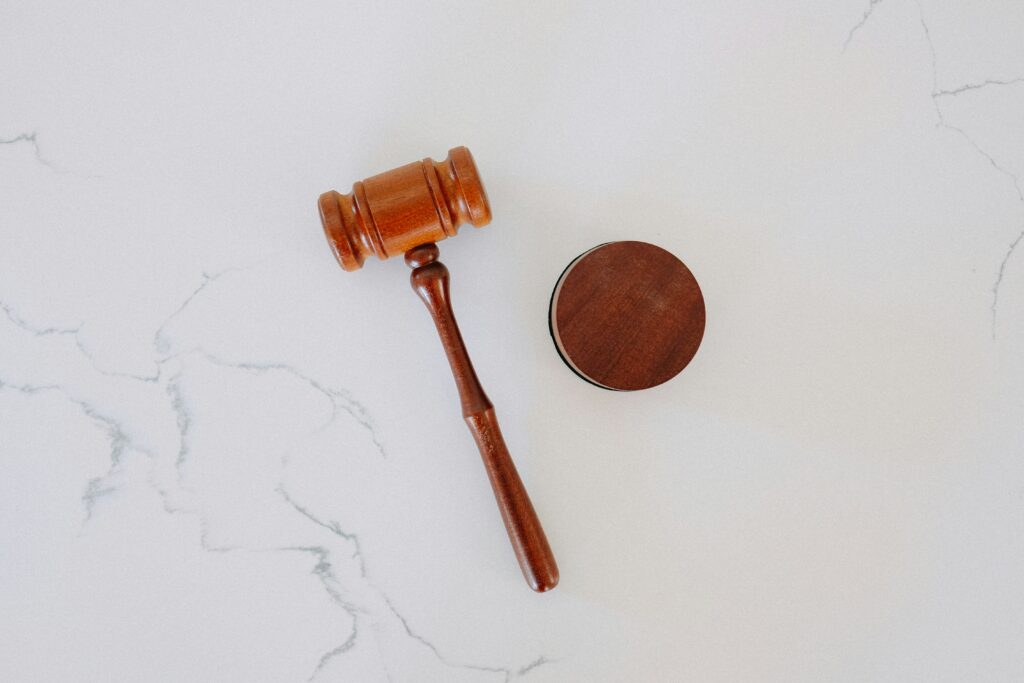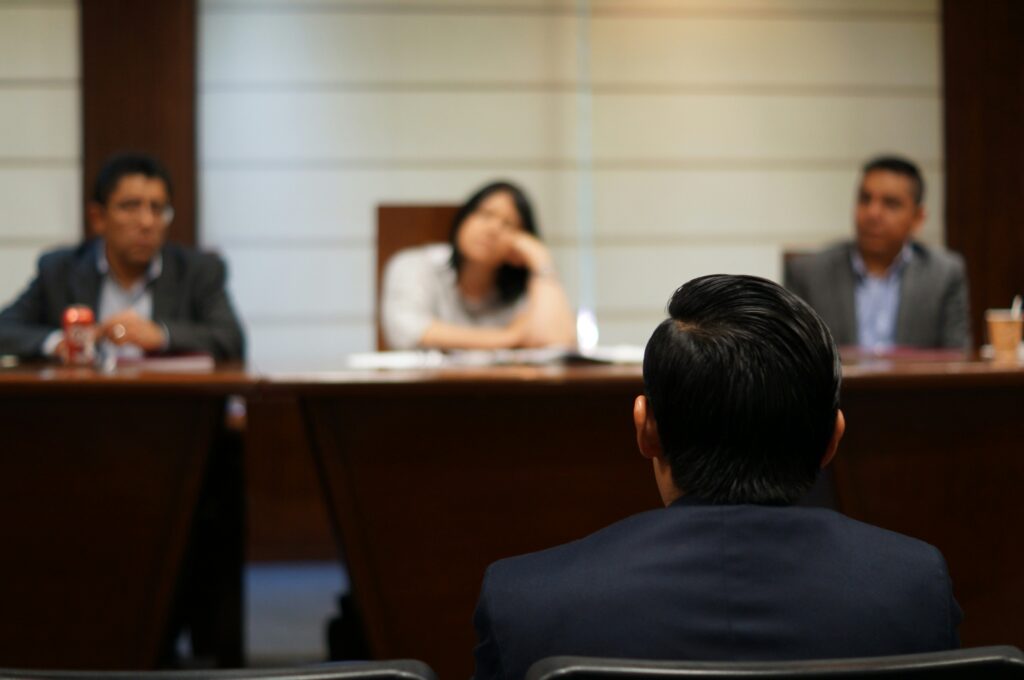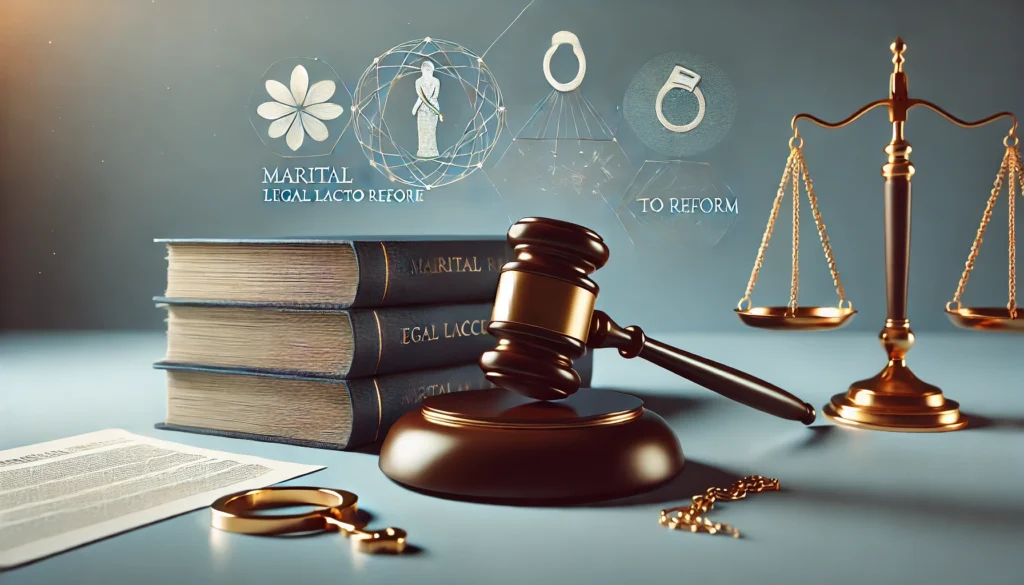Published On: September 21st 2025
Authored By: Darwin Sahay S
- GOVERNMENT LAW COLLEGE, RAMANATHAPURAM
ANALYSIS
The article provides a comprehensive and balanced examination of the legal tension between freedom of speech and hate speech regulation in Indian democracy. Beginning with the constitutional framework, it underscores that while Article 19(1)(a) of the Constitution robustly protects freedom of speech and expression, Article 19(2) permits the State to impose reasonable restrictions on clearly enumerated grounds, including public order, decency, and the prevention of incitement. This constitutional scheme ensures that free speech is not absolute, acknowledging India’s complex social fabric where unregulated speech can have particularly destabilizing effects.[1]
A key analytical strength of the piece lies in its identification of the lack of a precise statutory definition for hate speech. Indian law, as detailed in the article, addresses hate speech through a patchwork of legal provisions such as Sections 153A, 295A, and 505 of the Indian Penal Code, and specific sections of the Representation of the People Act rather than through a unified legislative approach. This has produced inconsistent enforcement, legal uncertainty, and at times, misuse of the law to stifle legitimate political or minority expression.
Judicial decisions are skillfully analyzed to reveal the evolving boundaries of lawful and unlawful speech. Landmark judgments from Romesh Thapar v. State of Madras to Shreya Singhal v. Union of India illustrate how Indian courts have incrementally shifted from broad ideals of free expression toward a doctrine that prioritizes the proximity and likelihood of harm. The interpretation of incitement, as a necessary threshold to limit speech, is shown as critical in distinguishing protected discourse from punishable hate speech.
The courts cautious approach refusing to criminalize mere advocacy or discussion unless it crosses into actual incitement highlights their role in safeguarding democratic freedoms while also acknowledging the real dangers posed by hate-driven rhetoric.[2]
By juxtaposing Indian law with US and UK approaches, the article illustrates that India occupies a middle path: more restrictive than the United States’ near-absolute First Amendment protection, but less so than the UK’s explicit criminalization of certain hate speech acts. This comparative analysis enhances the article’s depth, demonstrating that India’s legal balancing act is both context-specific and globally relevant.
The article thoughtfully discusses contemporary challenges such as the exponential rise of online hate speech, the use of polarizing rhetoric in electoral politics, and the disproportionate impact on marginalized groups. It connects doctrinal ambiguity with on-the-ground enforcement hurdles, highlighting persistent issues like institutional inertia, political misuse, and the ‘chilling effect’ where vague laws lead citizens, journalists, and activists to self-censor for fear of prosecution.
This expanded analysis further situates the article as a valuable contribution for academics, legal practitioners, and policymakers concerned with the future of democratic freedoms amid rising polarization.
INTRODUCTION
Freedom of speech and expression forms the bedrock of any functional democracy. It facilitates public participation, accountability, intellectual growth, and social progress. In India, this right is constitutionally guaranteed but is not absolute. Balancing this right against the harms posed by hate speech expressions that incite hatred, violence, or discrimination remains one of the most vital and contentious legal challenges in contemporary Indian democracy. As Indian society becomes more pluralistic but simultaneously faces increasing polarization, the challenge of maintaining this legal balance becomes ever more acute.
This article details the constitutional, statutory, and judicial frameworks balancing freedom of speech and hate speech in India. It analyses the dynamic evolution of legal standards, the doctrinal ambiguities, comparative perspectives, and systemic enforcement issues. Recommendations are made for reforms to ensure better harmonization of liberty and social harmony.
CONSTITUTIONAL FOUNDATIONS: ARTICLE 19 AND ITS REASONABLE RESTRICTIONS
The Breadth of Article 19(1)(a)
Article 19(1)(a) of the Constitution of India guarantees “the right to freedom of speech and expression” to every citizen. This freedom is essential for the discovery of truth, individual autonomy, and healthy democratic discourse. The scope covers spoken and written words, symbolic speech, the freedom of the press, and even certain artistic expressions.
The Scope of Permissible Restrictions
However, Article 19(1)(a) is subject to Article 19(2), which allows the State to impose “reasonable restrictions” on grounds of:[3]
- The Sovereignty and Integrity of India,
- The Security of The State,
- Friendly Relations with Foreign States,
- Public Order,
- Decency or Morality,
- Contempt of Court,
- Defamation, and
- Incitement to an Offence.
This balance recognizes that freedom does not equate license; speech must be exercised without undermining the fabric of social order or individual dignity.
Evolution of the Balancing Mechanism
Early Supreme Court decisions like Romesh Thapar v. State of Madras and Brij Bhushan v. State of Delhi recognized freedom of speech as the essence of democratic governance but affirmed the legitimacy of restrictions closely linked (“proximate”) to the grounds listed under Article 19(2). Over time, this balance has been continually refined and contested.[4]
DEFINING HATE SPEECH IN INDIAN LAW
- The Elusive Statutory Definition
Indian law does not have a single unified statutory definition of “hate speech.” Instead, the law covers various forms of hate-motivated expression under multiple criminal and regulatory statutes, resulting in piecemeal and sometimes inconsistent application.
Broadly, hate speech can be described as:
Speech intended to stir up hatred against particular groups, especially on the basis of religion, caste, ethnicity, language, gender, or nationality, often resulting in discrimination, violence, or disturbance to social harmony.
- Legislative Coverage of Hate Speech
- Indian Penal Code, 1860 (IPC):
Section 153A: Penalizes promotion of enmity between different groups on grounds of religion, race, etc., and acts prejudicial to harmony.[5]
Section 295A: Criminalizes deliberate and malicious acts intended to outrage religious feelings.[6]
Section 505(1)-(2): Penalizes statements conducing to public mischief (including inciting offenses against groups based on community lines).[7]
Section 298: Addresses deliberate intent to wound religious feelings.[8]
- Representation of the People Act, 1951:
Section 123(3A) & Section 125: Outlaw promotion of enmity or hatred during elections classified as “corrupt practice” offenders are disqualified from contesting.[9]
- Other Regulations:
Broadcasting Codes and Press Guidelines: The News Broadcasting Standards Authority (NBSA) and Press Council of India provide self-regulatory guidelines curbing hate content in media broadcasting.[10]
- Information Technology Act, 2000:
Section 66A (struck down in Shreya Singhal v. Union of India) had regulated the transmission of offensive messages, but was criticized for vagueness and broad chilling effects.[11]
- The Absence of Clarity and the Risk of Misuse
The failure to adopt a precise, clear definition has left the law open to both selective enforcement and possible suppression of dissent under the guise of regulating “hate speech.” This ambiguity warrants judicial intervention and reform, as discussed below.
JUDICIAL APPROACHES: INTERPRETING THE DIVIDE
- Protecting Speech, Safeguarding Order
Romesh Thapar v. State of Madras (1950): Held press freedom is vital, but subject to the grounds under Article 19(2). Struck down a Madras government order banning a journal because it was not provably “necessary for public order.”
Brij Bhushan v. State of Delhi (1950): Government pre-censorship of speech was held invalid unless directly linked to public disorder grounds.
- Proximity and Reasonableness: The “Clear and Present Danger” Doctrine
- Rangarajan v. P. Jagjivan Ram (1989)[12]: The Court held that restrictions must not be remote or speculative; the anticipated harm must have a proximate and direct connection to public order disturbance. Mere anticipation, without a “clear and present danger,” is not adequate basis for restricting speech.
Superintendent, Central Prison v. Ram Manohar Lohia (1960)[13]: Introduced the “proximity test” the link between speech and resultant lawless action must be close. The mere tendency to create disorder is not sufficient.
- Distinguishing ‘Hate Speech’ from ‘Free Speech’: Key Judicial Guidelines
Shreya Singhal v. Union of India (2015): Striking down Section 66A of the IT Act, the Supreme Court held legislative restraint must target incitement, not mere discussion or advocacy. Only when speech crosses into actual “incitement to violence or disorder” can it be curtailed.[14]
Pravasi Bhalai Sangathan v. Union of India (2014)[15]: The Supreme Court acknowledged growing harm from hate speech, called existing laws piecemeal and enforcement lackadaisical, and advocated for legislative clarity and public awareness campaigns.
Subramanian Swamy v. Union of India (2016)[16]: Court upheld the criminalization of defamation as a permissible restriction on free speech under Article 19(2), clarifying the bounds of expression vis-à-vis harm to reputation.
COMPARATIVE INTERNATIONAL PERSPECTIVES
United States: Maximum Latitude, Minimal Hate Speech Laws
The First Amendment broadly protects speech, including hate speech, short of direct incitement to imminent unlawful action, “fighting words,” or “true threats.” Brandenburg v. Ohio set the “imminent lawless action” test, ensuring extremely high thresholds before free speech can be curtailed.[17]
United Kingdom: Explicit Criminalization of Hate Speech
UK law criminalizes hate speech under the Public Order Act 1986, with specific offenses for incitement of racial or religious hatred, even if such speech does not result in violence. The threshold is thus lower than in the US but aims to balance civil freedom with order.[18]
India’s Unique Path
Indian jurisprudence adopts a middle path, neither as permissive as the US nor as restrictive as the UK, seeking to balance speech and public order manifested in its “reasonable restrictions” doctrine.
CONTEMPORARY CHALLENGES FACING INDIAN DEMOCRACY
Proliferation of Online Hate Speech
Digital platforms magnify the spread of hate content. Social media has enabled anonymous, rapid dissemination of incendiary speech. Current laws drafted for older, print-based contexts are often inadequate. While intermediary guidelines have been updated, they risk massive “chilling effects” on lawful speech and place enormous compliance burdens on digital service providers.
Hate Speech in Electoral Politics
Election campaigns in India frequently witness divisive and inflammatory rhetoric targeting religious, caste, or linguistic groups. The Election Commission is empowered to curb such offenses, but practical enforcement is fraught owing to political patronage, lack of swift punitive measures, and deep-rooted societal divisions.
Targeting of Marginalized Groups
Empirical studies demonstrate that hate speech disproportionately impacts vulnerable groups religious minorities, Dalits, LGBTQ+ persons, etc. leading to exclusion, fear, and actual violence. The legal apparatus struggles to provide redress, often due to institutional apathy or delay.
Enforcement Gaps, Selective Prosecution, and Chilling Effect
Enforcement Gaps: Delay in investigation, low prosecution rates, backlog in courts.
Selective Prosecution: Law is often invoked more readily against political dissenters, journalists, and minority voices than actual purveyors of hatred.
Chilling Effect: Vague statutes generate lethal chilling effects, as citizens and media self-censor to avoid potential prosecution.
DOCTRINAL, LEGAL, AND PRACTICAL DILEMMAS
Ambiguity and Overlap
The absence of a precise legal definition of hate speech leads to overlap with blasphemy, sedition, defamation, etc., making it unclear under which law particular acts should be prosecuted.
Subjectivity in Application
What is hate speech to one group may be free speech to another; this subjectivity creates judicial inconsistencies and public confusion.
Freedom of Expression vs. Social Harmony
Protecting robust debate means tolerating offensive views, but unchecked hate speech can erode the social contract and minority safety. The law must draw clear, justiciable lines.
RECOMMENDATIONS FOR REFORM
- Statutory and Judicial Definition of Hate Speech
Enact a clear, narrow definition focused on intentional incitement to discrimination, hostility, or violence. The Law Commission of India’s 267th Report proposes an amendment introducing a new section penalizing “speech that incites hatred against groups based on religion, race, caste, or community.” Legislators should build on this work for precise statutory clarification.[19]
- Graduated and Proportionate Penalties
Penalties must be proportionate to harm. Not all hate speech should warrant imprisonment minor infractions can be dealt with through fines, community service, or compulsory education; only the most egregious offenses should attract harsh sentences.
- Training and Institutional Capacity Building
Judiciary and law enforcement need specialized training in social context, digital evidence, minority rights, and balancing constitutional freedoms. Clear guidelines for investigation and prosecution can prevent abuse.
- Safeguards Against Misuse
Strict safeguards including prior judicial sanction and periodic review should accompany criminal prosecution for hate speech to reduce wrongful or motivated prosecutions.
- Emphasis on Counterspeech and Education
Promote education, counter-narratives, and intergroup dialogue as primary tools against hate, reserving criminal law as a last resort. Civic education about constitutional values is critical.
- Robust and Rights-Respecting Digital Regulation
Internet intermediaries must have clear notice-and-takedown procedures, due process protections, and transparency mandates to ensure that illegal content is swiftly removed, but legitimate expression is not arbitrarily censored.
CONCLUSION
The health of any democracy is measured by its capacity to protect free and honest expression while preventing words that fan hatred, violence, or discrimination. India’s legal system aspires to maintain this equilibrium through constitutional safeguards, penal statutes, and vigilant judiciary. Yet, ambiguity in definition, gaps in enforcement, selective prosecution, and digital proliferation complicate this task. Unless legislative clarity, institutional will, and societal consensus align, both the promise of liberty and the assurance of dignity remain at risk.
The way forward is not to sacrifice one value for the other, but to pursue greater legal precision, proportionate enforcement, civic awareness, and institutional transparency. Only then can India offer its citizens both the freedom to speak and the security of not being targeted by speech.
REFERENCES
[1] Constitution of India, art 19(1)(a)
[2] Romesh Thapar v State of Madras AIR 1950 SC 124
[3] Constitution of India, art 19(2)
[4] Brij Bhushan v State of Delhi AIR 1950 SC 129
[5] Indian Penal Code 1860, s 153A
[6] Indian Penal Code 1860, s 295A
[7] Indian Penal Code 1860, s 505
[8] Indian Penal Code 1860, s 298
[9] Representation of the People Act 1951, s 123(3A)
[10] News Broadcasting Standards Authority (NBSA), Code of Ethics and Broadcasting Standards (2008)
[11] Shreya Singhal v Union of India (2015) 5 SCC 1
[12] S Rangarajan v P Jagjivan Ram (1989) 2 SCC 574
[13] Superintendent, Central Prison v Ram Manohar Lohia AIR 1960 SC 633
[14] Information Technology Act 2000, s 66A (declared unconstitutional in Shreya Singhal v Union of India
(2015) 5 SCC 1)
[15] Pravasi Bhalai Sangathan v Union of India (2014) 11 SCC 47
[16] Subramanian Swamy v Union of India (2016) 7 SCC 221
[17] Brandenburg v Ohio 395 US 444 (1969)
[18] Public Order Act 1986 (UK)
[19] Law Commission of India, Report No 267, ‘Hate Speech’ (March 2017)




